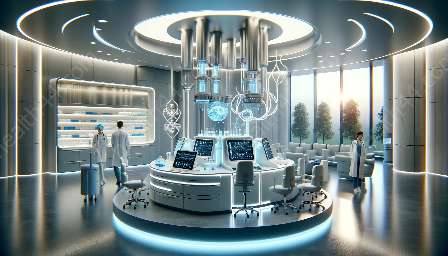Medical microscopy is an essential tool in modern medical laboratory sciences, playing a critical role in the study, diagnosis, and treatment of various diseases. This topic cluster will explore the fascinating realm of medical microscopy, its applications in the field of health, and its significance in advancing medical knowledge and patient care.
The Basics of Medical Microscopy
Medical microscopy involves the use of microscopes to study samples of bodily fluids, cells, and tissues for diagnostic and research purposes. It allows for the visualization of minute structures that are not visible to the naked eye, enabling medical professionals to identify and understand diseases at a cellular and molecular level.
The primary types of microscopes used in medical laboratory sciences include light microscopes, electron microscopes, and fluorescence microscopes. Each type has its unique capabilities and applications in the field of health, contributing to a comprehensive understanding of various medical conditions.
Applications in Medical Laboratory Sciences
Medical microscopy is integral to the practice of medical laboratory sciences, as it facilitates the examination of specimens to aid in the diagnosis of diseases. It is used in disciplines such as clinical pathology, hematology, microbiology, and histology, providing valuable insights into the nature and progression of illnesses.
In clinical pathology, medical microscopy is employed to analyze blood, urine, and other bodily fluids for the presence of abnormal cells, pathogens, or other indicators of disease. Hematology utilizes microscopy to study blood cells and detect abnormalities that may signal conditions such as anemia, leukemia, or clotting disorders.
Microbiology relies on microscopy to identify and characterize microorganisms, such as bacteria, viruses, and fungi, contributing to the diagnosis and treatment of infectious diseases. Additionally, histology utilizes microscopy to examine tissues and cellular structures, aiding in the detection of abnormalities and the diagnosis of various types of cancer.
Advanced Techniques and Innovations
Medical microscopy continues to advance through cutting-edge techniques and innovations that enhance its capabilities in medical laboratory sciences. For instance, confocal microscopy enables the three-dimensional visualization of biological specimens, providing detailed insights into cellular structures and interactions.
Furthermore, advancements in digital imaging and analysis have revolutionized medical microscopy by allowing for the capture, storage, and sharing of high-resolution images for diagnostic and educational purposes. These technological developments have significantly improved the accuracy and efficiency of medical microscopy, benefiting both healthcare professionals and patients.
Impact on Health
The applications of medical microscopy have a profound impact on health by contributing to the early detection, accurate diagnosis, and effective treatment of diseases. Through the detailed examination of biological samples, medical professionals can identify specific abnormalities and tailor personalized treatment plans for patients.
Moreover, medical microscopy plays a crucial role in research efforts aimed at understanding the underlying mechanisms of diseases and developing innovative therapeutic interventions. By elucidating the cellular and molecular processes involved in various health conditions, microscopy contributes to the advancement of medical knowledge and the improvement of patient outcomes.
Future Perspectives
The future of medical microscopy holds promising prospects for further innovation and integration with other technological advancements. Emerging techniques, such as super-resolution microscopy and label-free imaging modalities, are poised to enhance the visualization of biological structures with unprecedented detail and precision.
Additionally, the integration of artificial intelligence and machine learning algorithms with medical microscopy data presents opportunities for automated analysis and diagnostic decision support, leading to more efficient and accurate healthcare delivery.
As medical microscopy continues to evolve, its synergy with medical laboratory sciences and its impact on health are expected to expand, offering new avenues for understanding and addressing complex medical challenges.


